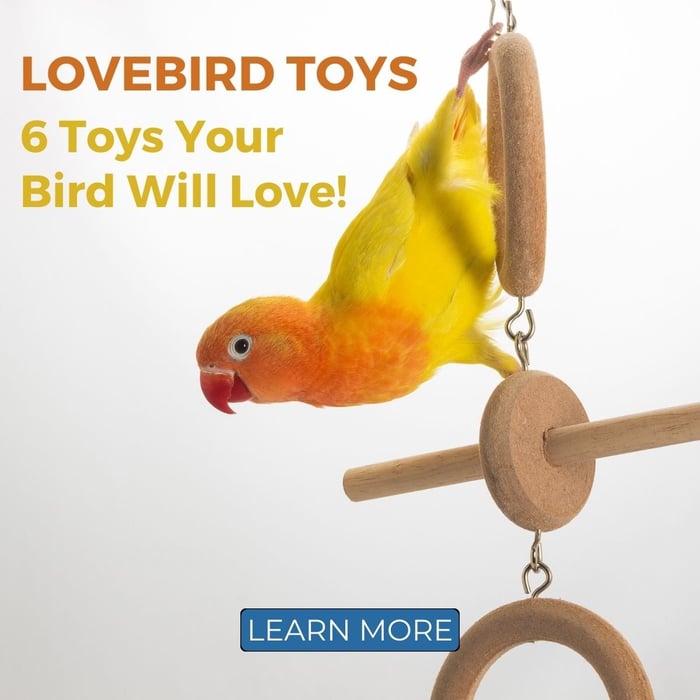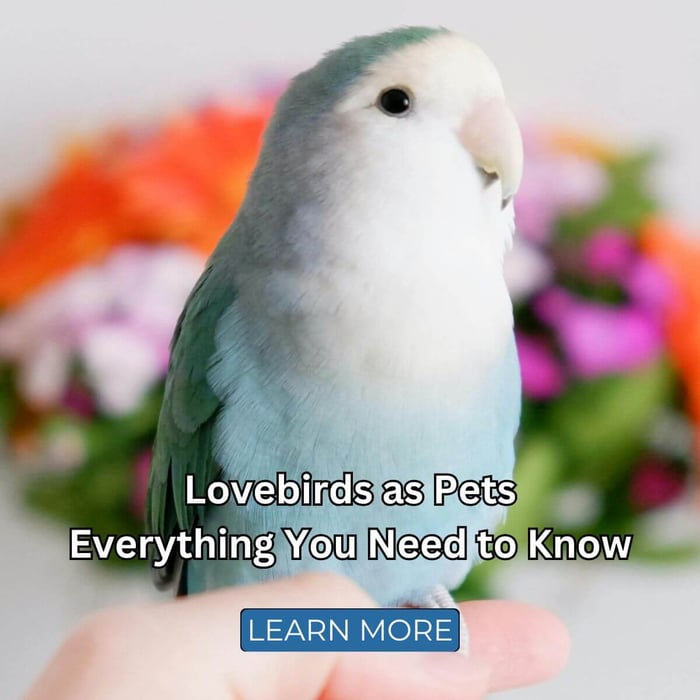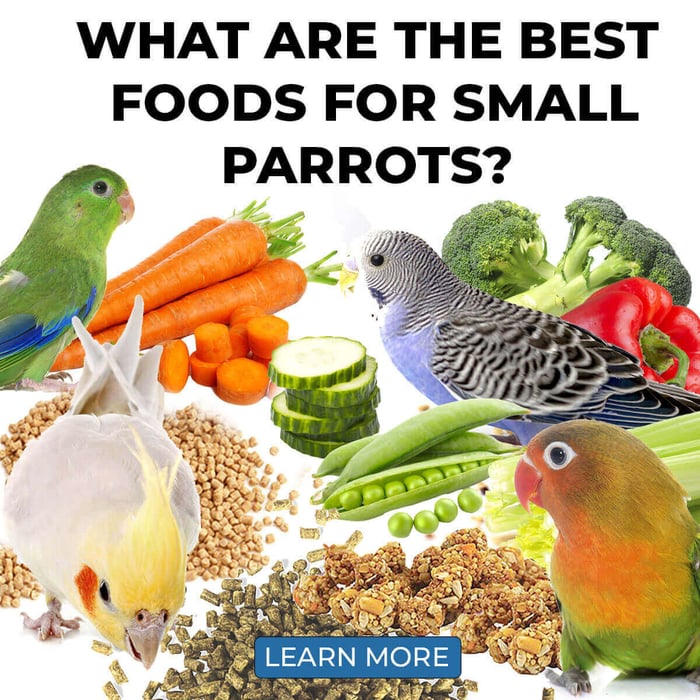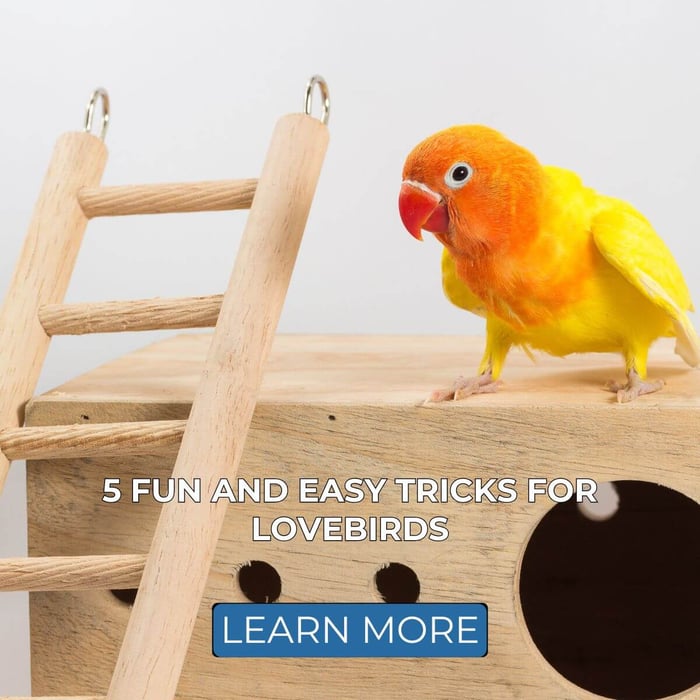Best Food to Feed Lovebirds: A Complete Guide to a Healthy Diet
If you share your home with lovebirds, you already know how much personality and energy these little parrots bring into your life. They are playful, social, and full of charm, but keeping them healthy starts with what you put in their food bowl. One of the most common questions bird owners ask is: what is the best food to feed lovebirds?
The truth is, there is no single 'perfect' food. Lovebirds thrive on a varied, balanced diet that mirrors the nutrition they would find in the wild. By combining high-quality pellets, fresh vegetables and fruits, and carefully chosen seeds, you can give your lovebird the foundation for a long, happy, and healthy life. This guide will walk you through exactly what to feed your feathered friend, why variety matters, and how to avoid common pitfalls.
Understanding Lovebirds' Nutritional Needs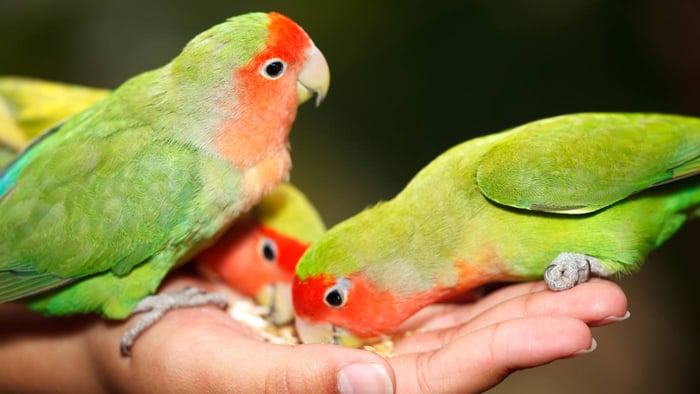
In the wild, lovebirds feed on a mixture of seeds, fruits, grasses, and vegetation. Captive lovebirds require the same kind of diversity, but with the added challenge of ensuring every meal is nutritionally complete. Unlike us, they cannot pick and choose healthy foods when they are lacking in vitamins or minerals. They eat what you provide, so it is up to you to get the balance right.
A well-fed lovebird should have:
- Bright eyes and smooth feathers.
- High energy and curiosity.
- Healthy weight (not underfed or overweight).
When their diet is imbalanced, too heavy in seeds, for example, health issues like obesity, liver disease, and vitamin deficiencies can appear. That is why it is essential to focus on the right foundation.
Pellets: The Cornerstone of a Lovebird's Diet
The best food to feed lovebirds starts with pellets. Pellets should make up around 60-70% of their daily diet. Unlike seed-only diets, pellets are specially formulated to provide consistent nutrition in every bite. They help prevent the selective eating habits that often happen when birds are offered seed mixes.
Look for natural, high-quality pellets designed for small parrots:
- Askio Nature Lovebird & Budgie Pellets Complete Natural Blend XSmall: Balanced, high-quality parrot diet designed especially for small parrots & parakeets such as Lovebirds.
- Harrison's Adult Lifetime Fine Organic Parrot Food: Perfect choice for ensuring your lovebird receives a nutritionally complete, 100% organic diet.
Pellets come in different shapes and flavours, so you may need to experiment to find what your bird prefers. Some lovebirds take to pellets immediately, while others need a gradual transition from seeds. Be patient; once your bird is converted, pellets will ensure they are getting reliable daily nutrition.
Vegetables: Colour, Crunch, and Nutrition
Fresh vegetables should make up about 15-20% of your lovebird's diet. Think of vegetables as the superfoods that give your bird a boost of vitamins, minerals, and antioxidants.
Some top choices include:
- Leafy greens like kale, spinach, and Swiss chard.
- Bright vegetables such as bell peppers, carrots, and sweetcorn.
- Other favourites like broccoli, courgette, peas, and cooked sweet potato.
Serve them raw or lightly steamed, chopped into bite-sized pieces. You can even weave leafy greens into cage bars or use them in foraging toys to encourage natural behaviours.
Fruits: A Sweet Treat in Moderation
Fruit plays an important role in your lovebird's diet, but it should only make up about 5-10%. Lovebirds love the sweetness, but too much fruit means too much sugar.
Offer small portions of:
- Apples (without seeds)
- Berries (blueberries, strawberries, raspberries)
- Mango, papaya, and melon
- Pomegranate seeds
Rotate fruits so your bird enjoys variety. Use them as training treats or rewards rather than free-feeding. This way, your lovebird gets the benefits without overindulging.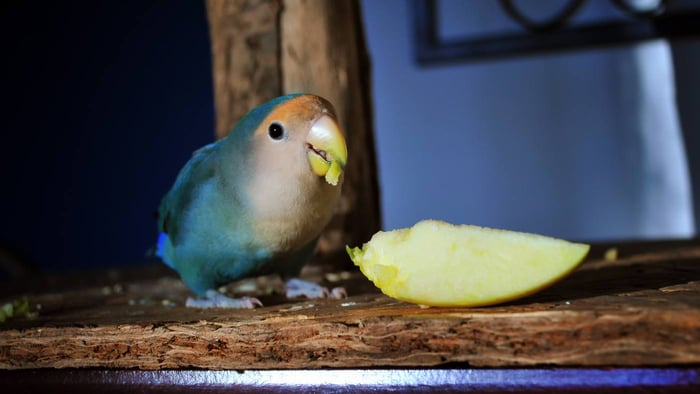
Seeds and Grains: From Staple to Supplement
In the wild, seeds are part of a lovebird's diet, but in captivity, they should be offered sparingly. Too many seeds can lead to obesity and liver problems, yet completely avoiding them is not the answer either. Seeds have value when used in moderation, especially for foraging enrichment or training sessions.
A small daily portion (about 5-10% of the diet) is ideal. Choose cleaner, healthier mixes such as:
- Country Premium Lovebird Seed Mix - blend of nature's finest offerings designed to enrich your lovebird's daily life.
- PUUR Lovebird Seeds - carefully selected ingredients to provide all the nutrients needed for a healthy and happy life.
By offering seeds as a supplement, not a staple, you can satisfy your bird's natural instinct without risking their health.
Supplements and Extras: Finishing Touches
Depending on your lovebird's individual needs, you may need to add a few extra supports to their diet:
- Calcium: A cuttlebone or mineral block is essential for bone strength and egg-laying females.
- Vitamins: If your bird is not fully transitioned to pellets, vitamin drops can help cover gaps.
- Tonic during moulting: This can help feather regrowth and reduce stress.
Fresh, clean water must be available at all times. Replace it daily and ensure the bowl is thoroughly washed to prevent bacteria.
Making the Transition to a Healthier Diet
If your lovebird has been raised on a seed-based diet, moving them to pellets and fresh food takes time. Sudden changes can cause stress, so go slowly:
- Introduce pellets alongside seeds, gradually increasing pellet quantity.
- Offer vegetables daily, even if they are ignored at first. Birds learn by watching, and sometimes placing a piece of carrot on your own plate while your lovebird is nearby sparks curiosity.
- Use foraging toys to make food fun and engaging.
With consistency, your bird will learn to enjoy their new, healthier menu.
Common Feeding Mistakes to Avoid
Even with the best intentions, many lovebird owners slip into habits that compromise nutrition. Here are a few pitfalls to steer clear of:
- Relying too heavily on seed mixes. They are tempting for your bird but nutritionally unbalanced.
- Offering too much fruit. Sugar in excess can harm your bird's health.
- Feeding human snacks. Foods high in salt, sugar, or fat are dangerous to parrots.
- Skipping variety. Birds thrive on colourful, diverse meals, so do not let their diet become repetitive.
Creating a Feeding Routine That Works
Lovebirds benefit from a consistent routine. Offer meals at the same times each day and remove uneaten fresh food after a couple of hours to prevent spoilage. Keep treats for training or enrichment so they retain value as rewards.
You will also find that mealtimes become moments of bonding. Many lovebirds enjoy sharing safe foods with their humans. Eating a slice of apple together or offering a bit of broccoli from your hand strengthens trust while reinforcing good diet habits.
Conclusion: The Best Food to Feed Lovebirds
So, what is the best food to feed lovebirds? The answer lies in balance. Pellets should form the core of the diet, supported by a colourful array of fresh vegetables, small amounts of fruit, and a carefully measured portion of seeds. With a little planning, you can ensure your lovebird gets everything they need to thrive.
Remember, feeding your lovebird well is not just about filling their bowl. It is about enriching their life, supporting their health, and giving them the energy to play, learn, and bond with you every day. When you provide the right nutrition, you are giving your lovebird the gift of a long, vibrant, and happy life.
FAQs
Can lovebirds eat only seeds?
No. A seed-only diet is not healthy for lovebirds. Seeds lack essential vitamins and minerals and can lead to obesity and liver disease. Seeds should only be a small part of the diet.
What vegetables are best for lovebirds?
Leafy greens such as kale, spinach, and chard are excellent choices, along with carrots, bell peppers, broccoli, peas, and cooked sweet potato.
Can lovebirds eat fruit every day?
Yes, but in small amounts. Fruit should be limited to around 5–10% of the diet due to its sugar content. Apples, berries, mango, and pomegranate are safe options.
Do lovebirds need supplements if they eat pellets?
If your lovebird is eating a high-quality pellet diet with added fresh foods, extra supplements are usually not necessary. However, a cuttlebone or mineral block for calcium is always recommended.
How do I switch my lovebird from seeds to pellets?
Do it gradually. Offer pellets alongside seeds, slowly increasing pellet portions over several weeks. Encourage curiosity by using pellets in foraging toys or mixing them with favourite foods.

